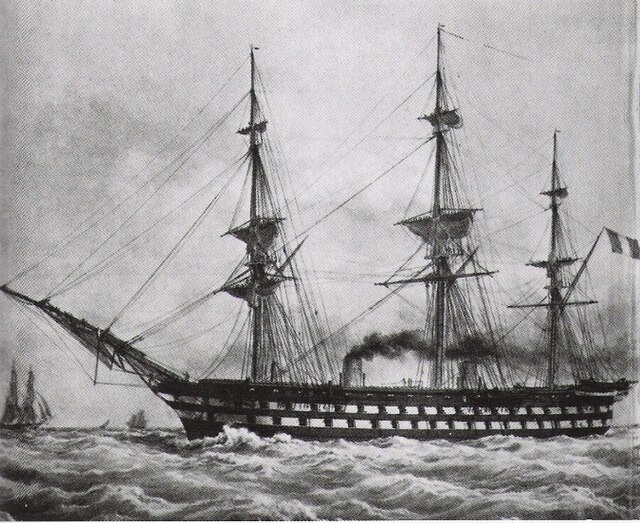The French ironclad Gloire was the first ocean-going ironclad, launched in 1859. She was developed after the Crimean War, in response to new developments of naval gun technology, especially the Paixhans guns and rifled guns, which used explosive shells with increased destructive power against wooden ships. Her design was also influenced by the Anglo-French development of ironclad floating batteries to bombard Russian forts during the same war.
Gloire anchored, 1869
Photograph of Gloire, circa 1860, at the Musée de la Marine, Paris.
The launch of Gloire.
Gloire sailing, 19th century print.
An ironclad was a steam-propelled warship protected by steel or iron armor constructed from 1859 to the early 1890s. The ironclad was developed as a result of the vulnerability of wooden warships to explosive or incendiary shells. The first ironclad battleship, Gloire, was launched by the French Navy in November 1859, narrowly preempting the British Royal Navy. However, Britain built the first completely iron-hulled warships.
The first battle between ironclads: CSS Virginia (left) vs. USS Monitor, in the March 1862 Battle of Hampton Roads
Napoléon (1850), the first steam battleship
A Paixhans naval shell gun. 1860 engraving
French Navy ironclad floating battery Lave, 1854. This ironclad, together with the similar Tonnante and Dévastation, vanquished Russian land batteries at the Battle of Kinburn (1855).








